Student Reflection on the BA Education Studies Placement, Pt. 1
By Sarah Pipkin, on 1 May 2025
The Special Collections Outreach Team has been fortunate to host two students on a placement from the IOE’s BA in Education Studies. As their time comes to a close with us, they’ve written a blog post about their experiences. In this post, Elena Yu reflects on her experience.
Introduction
I chose the Education Placement Module this term, and it is so lucky for me to spend 50 wonderful hours with warm-hearted staff members in UCL Special Collection team and my classmate Joann Zhang, working on a project around the topic of “Commonwealth Migration”. We hope that our research and work will offer some help for GCSE students’ history study. Our placement started in late January with an initial online meeting with Vicky Price and Sarah Pipkin. Over the following weeks, Joann and I gained insight into the various aspects of the team’s work — including archiving, cataloguing, digitisation, and the outreach efforts related to the collection.
Working as a team

Illustration of shooting an ancient book in the digitization process
While working through the archives, a number of staff members generously shared their expertise, guidance, and advice—all of which greatly inspired me and contributed to the development of my research. Colin Penman from the UCL Records suggested several useful items from the Records collection. Becky Sims, Liz Lawes, and Chelsie Mok kindly offered valuable advice on locating materials, and Amy Howe patiently demonstrated the digitization process (as shown in the photo). Their support was instrumental in deepening my understanding of archival work and contextualizing it within the scope of my research.
The most exciting collection item

Material reference number: GA/9/2/4
After keyword searching in the catalogues of online library and looking at them in the UCL Special Collections Reading Room, GA/9/2/4 is a part of most intriguing material that I found. These colourful leaflets and booklets are from 1970-1987, and perfectly show activities that were done by the Commonwealth Institute to provide better service to both immigrants’ lives. Leaflets included multiple types of activities offered, such as school visits to exhibition art galleries, educational services, quiz pamphlets featuring fun facts or knowledge of commonwealth nations’ culture, teaching packs, workshops and library services. The content of the activities covered wide range of commonwealth nations and communities. They are suitable for assisting students with GCSE History learning, as they used harmless language with easy vocabularies, with interesting illustrations and contents created for children in similar age groups.
What I have learned
This placement has provided me with not only practical work skills but also meaningful life experience. As a student who began with little background knowledge in either archival work or the topic of Commonwealth migration, I initially felt overwhelmed and uncertain. Thanks to the helping hands from Vicky, Sarah, and Joann, I gradually developed a clearer understanding of the research topic, along with the ability to navigate specific catalogues to find relevant materials, and it is truly cheerful when I can see my progress. I still remember Vicky’s words: “It’s human instinct to push away from daunting tasks but give yourself the courage to climb over the mountain and take the first step. That’s the hardest part of the process—once you’ve made that move, you’re already making progress.” Her encouragement stayed with me throughout the journey and continued to motivate me whenever I felt discouraged.
Thank you so much to Elena for her hard work and her reflection on her placement!
 Close
Close






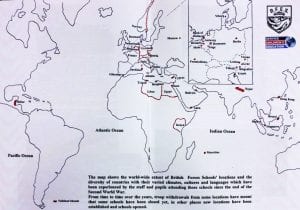

 The stories include ‘Battle of Frogs and Mice’, a short animal epic ascribed to Homer in the ancient world and ‘The Three Caskets’ which was used in Shakespeare’s Merchant of Venice. The book also contains a couple of firsts: the first appearance of a Norwegian folk tale ‘The History of Asim and Asgard’ and the first publication of Scott’s poem ‘The Bonnets of Bonny Dundee’ (Hahn, 2015, p. 127). In addition, there are writings by the prolific author of adult and children’s stories Maria Edgeworth (1768 – 1849) who also wrote the well-known education treatise
The stories include ‘Battle of Frogs and Mice’, a short animal epic ascribed to Homer in the ancient world and ‘The Three Caskets’ which was used in Shakespeare’s Merchant of Venice. The book also contains a couple of firsts: the first appearance of a Norwegian folk tale ‘The History of Asim and Asgard’ and the first publication of Scott’s poem ‘The Bonnets of Bonny Dundee’ (Hahn, 2015, p. 127). In addition, there are writings by the prolific author of adult and children’s stories Maria Edgeworth (1768 – 1849) who also wrote the well-known education treatise 
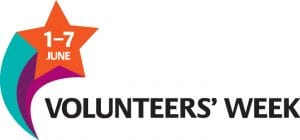

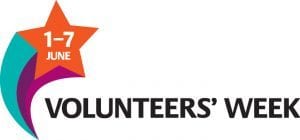
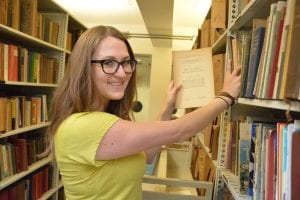 Ralph Waldo Emerson once wrote: “If we encountered a man of rare intellect, we should ask him what books he read.” At UCL Institute of Education (IOE) Special Collections and Archives we are building a picture of Joseph A. Lauwerys and his life by listing all of the reading material in his personal library. I am one of two volunteers sifting through 28 double-stacked shelves full of books, academic journals, newsletters, meeting proceedings and more collected by Lauwerys, a Belgian-born scientist who became a leader in comparative education studies instrumental in the establishment of the (IOE) and the United Nations Educational, Scientific and Cultural Organization (UNESCO).
Ralph Waldo Emerson once wrote: “If we encountered a man of rare intellect, we should ask him what books he read.” At UCL Institute of Education (IOE) Special Collections and Archives we are building a picture of Joseph A. Lauwerys and his life by listing all of the reading material in his personal library. I am one of two volunteers sifting through 28 double-stacked shelves full of books, academic journals, newsletters, meeting proceedings and more collected by Lauwerys, a Belgian-born scientist who became a leader in comparative education studies instrumental in the establishment of the (IOE) and the United Nations Educational, Scientific and Cultural Organization (UNESCO).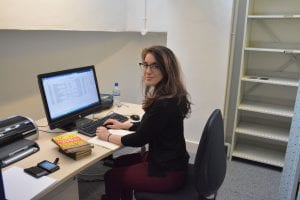 I am Teodora, one of the volunteers listing all of the reading material in Joseph A. Lauwerys’ personal library. I cannot tell which reason influenced me to work with the IOE’s Special Collections and Archives more: my studies in Art History and Material Studies which, by default, bring me closed to any piece of heritage and culture, or my passion for volunteering, which constantly challenges me to step beyond my comfort zone. But I know for sure that the mixture between these two reasons always manages to get me closer to who I want to be.
I am Teodora, one of the volunteers listing all of the reading material in Joseph A. Lauwerys’ personal library. I cannot tell which reason influenced me to work with the IOE’s Special Collections and Archives more: my studies in Art History and Material Studies which, by default, bring me closed to any piece of heritage and culture, or my passion for volunteering, which constantly challenges me to step beyond my comfort zone. But I know for sure that the mixture between these two reasons always manages to get me closer to who I want to be.